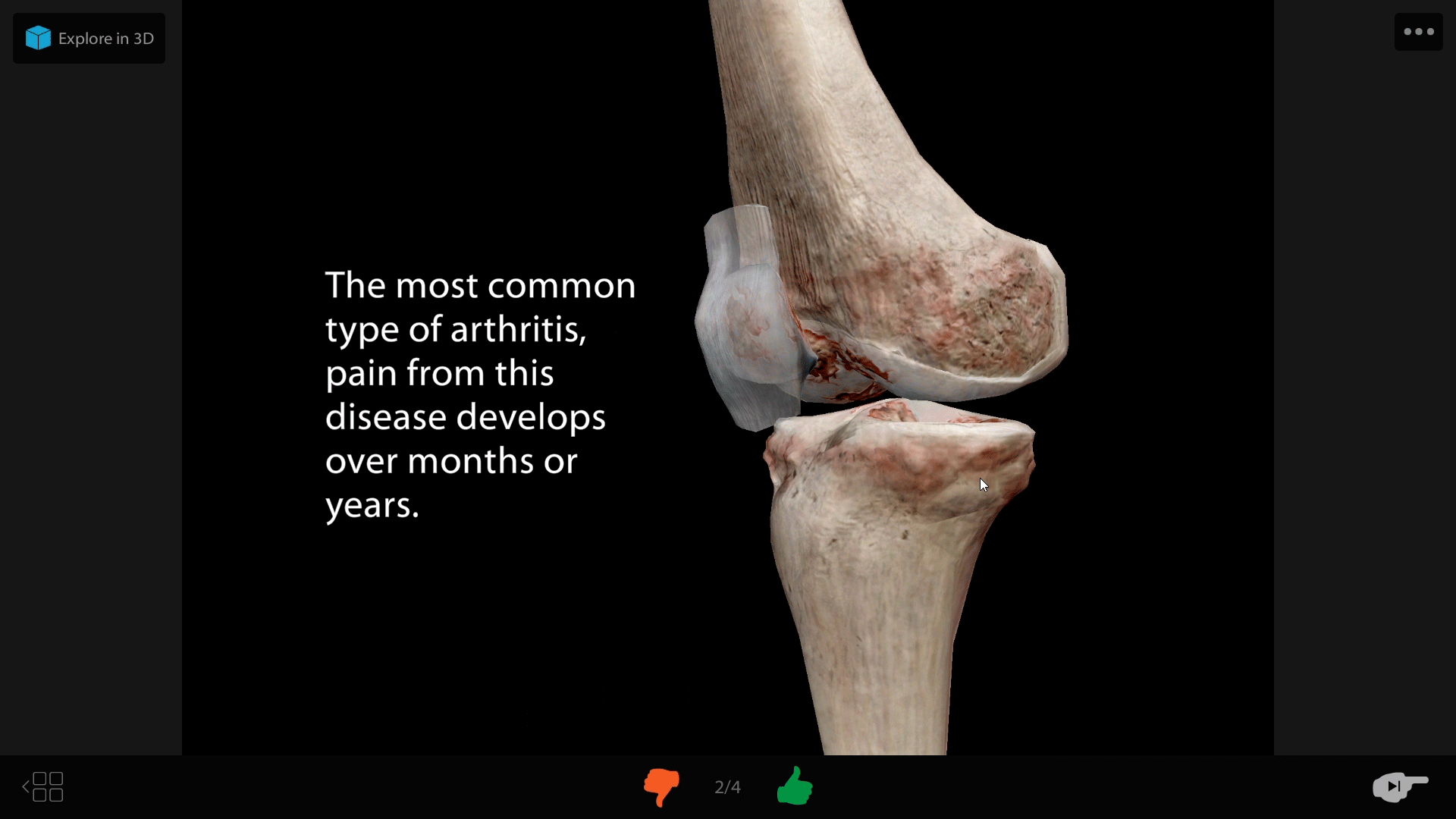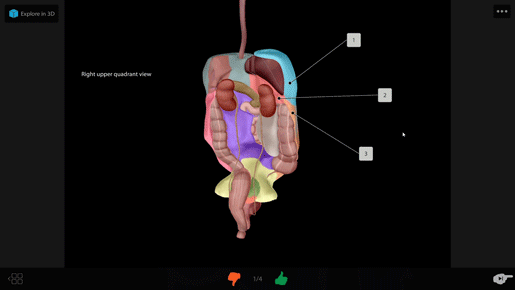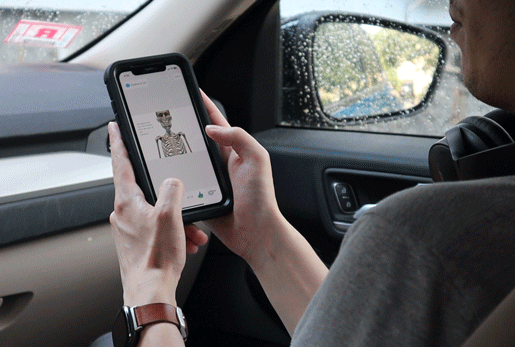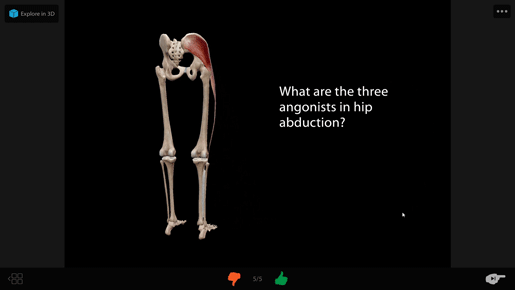10 Creative Uses for Flashcards in Visible Body Suite
Posted on 8/11/23 by Sarah Boudreau
Visible Body Suite contains thousands of 3D models just waiting to be made into virtual Flashcards! In this blog post, we’ll go through ten different ways to use Flashcards and get the most out of Visible Body Suite’s huge library of content.
What makes Flashcards so special? Flashcards come with customization options to make studying stick!
Flashcard features include:
- Auto-labeling. Click “Add Label” and drag the label to the structure you want. On the back side of the Flashcard, select “Auto-label” and voila! No need to worry about mislabeling or misspelling.
- Add text. Write your own text! Write your own quiz prompts or answers with your choice of font size and color.
- Draw. Add your own annotations in nine different colors, four different sizes, and four levels of opacity! Use a pencil or highlighter to freehand draw, or add rectangles, circles, lines, and arrows—and the eraser is always there in case you need it.
- Share. You can easily share Flashcards and Flashcard Decks with just a couple clicks, making collaboration a breeze.
Visible Body Suite’s Flashcards are a flexible tool that can help you or your students learn vocabulary, think clinically, and even study for certification exams!
1. Study pathologies
Visible Body Suite has many different pathology models available that you (or your students) can use for studying! You can use Flashcards to study relevant structures, but you can also use the text box to quiz yourself on symptoms and risk factors associated with the pathology.
You can also use Flashcards to compare normal and disease states!

Flashcard using the osteoarthritis model in Visible Body Suite.
2. Practice the FAST exam
During a focused assessment with sonography in trauma exam, aka FAST exam, the ultrasound operator looks for fluid in the pericardial, perihepatic, perisplenic, and pelvic areas. FAST exams are an important part of trauma medicine, and students can use VB Suite’s models to identify the quadrants and structures they will someday examine in a FAST exam.

Flashcard Deck in Visible Body Suite based on the FAST exam.
3. Add a new dimension to case studies
This is where the text box tool can really shine! Use Flashcards to look at case studies in a new way, using the text box to write out the patient’s symptoms and history alongside relevant anatomy and pathology models.
4. Play an in-class game show
Here’s a Flashcard idea for all the educators out there! This idea is from our “5 Ways to Gamify Your A&P Classroom with Visible Body” blog post.
Use the projector in your classroom to show the Flashcard Deck to the entire class. Students can work in teams to answer the questions and “buzz in” to earn points! Click on the Flashcard to flip it over and reveal the answer.
5. Study anywhere
Did you know that Flashcards are also available on your mobile device? Using the VB Suite mobile app, you can take Flashcards anywhere you go. You do not need an internet connection to access Flashcards, which makes them a great tool for studying on the go. 
Study anywhere with Flashcards in Visible Body Suite!
6. Spice up your notes or class materials with QR codes
Speaking of mobile devices, you can generate QR codes you can use with your mobile device to instantly view a Flashcard Deck! On the Flashcard Deck menu, click the three dots next to the Deck you want to share, then click “Share Deck.” There you will find a button to download a QR code you can then add to notes, presentations, syllabi, you name it!
To learn more, check out our blog post “3 Ways to Use QR Codes in the Classroom with Visible Body Suite.”
7. Get the whole picture
By incorporating microanatomy and gross anatomy in the same Flashcard Deck, you can think critically about how concepts fit together. For example, you can look at the alveolus model, then move to the alveolar sacs, then move up to examining the lungs!
8. Explore in 3D
For tough topics, the Explore in 3D feature lets you review content and return to where you left off in the Flashcard Deck. At any time, you can click "Explore in 3D" to explore the model the Flashcard is based on. For example, if you were looking at a muscle, you can click “Explore in 3D” to manipulate the model and get a look at its attachments and innervation.
You can select and read up on other structures, and you can even access other models and views through the Related Content box. When your curiosity has been satiated, click “Return to Flashcard” to continue studying!
9. Master muscle vocabulary
Visible Body has a bank of free, premade Flashcard Decks that cover a wide range of subjects, including anatomical terminology, muscle naming schemes, and prefixes and suffixes! These are especially helpful for introductory-level students overwhelmed by memorizing terms.
Can’t tell your dorsiflexion from your plantarflexion? You can make your own Flashcards to master the vocabulary of muscle actions!
Using annotations and tags, you can put new vocabulary terms to work with Flashcards made from muscle action models.

Flashcard using the hip abduction muscle action model in Visible Body Suite.
10. Study for EKG certification
Visible Body Suite’s beating heart model is pretty cool: it’s fully dissectible, you can adjust BPM, see the path of blood flow, view conduction, listen to the heartbeat, and see how it all looks on an EKG!
This model is a valuable tool if you’re pursuing EKG certification! To study for an EKG certification exam using Flashcards, you can look at the heart model and the beating heart model to memorize the anatomy of the heart. Use the beating heart model to quiz yourself on the flow of electricity through the heart.
How do YOU use Flashcards?
Thanks to customization options, there are many creative ways to use Flashcards in the classroom or for your own study practice.
Do you use Flashcards in a way not represented on this list? Share your methods in the comments!
Be sure to subscribe to the Visible Body Blog for more anatomy awesomeness!
Are you an instructor? We have award-winning 3D products and resources for your anatomy and physiology course! Learn more here.



